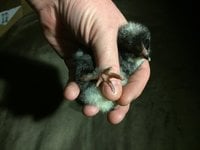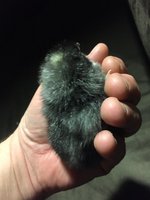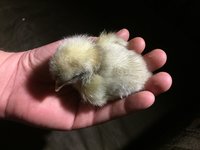southernhusky
Chirping
- Aug 30, 2015
- 289
- 26
- 92
so I crossed my blue marans too x couple cream legbar hens. Hatched these f1 auto sexing eggs & kept some pullets, most looked more like legbars with copper streakage. Now I’ve got a few of them laying, crossed them back to pure blue & splash marans Roos for darker layers. I’ve hatched a few of these f2 chicks(5 recently). Noticed some are hatching with head spots & some are not. Since only barring gene would have come from the hen, are these chicks with a headspot likely males?







